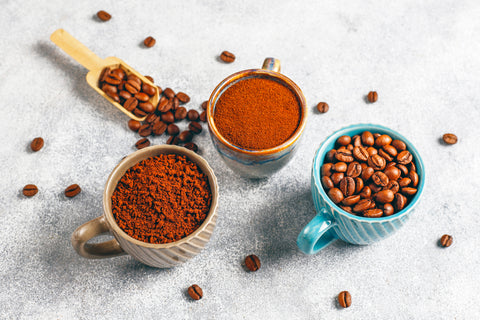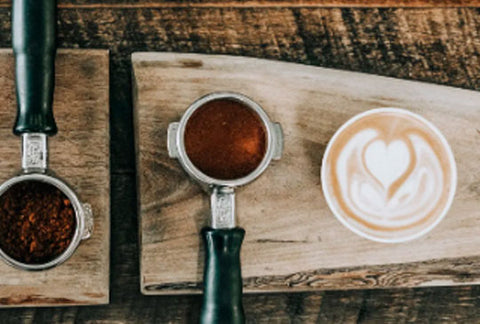Have you ever been impressed by the way a person precisely describes their experience with a cup of coffee? Verbalizing that experience can be difficult. Many of us coffee drinkers know what we like and what we don't, but we may not have the particular words to describe it. While you don't have to be a professional barista or experienced coffee farmer to recognize the characteristics of a cup of coffee, you do need to know what to look for. To optimize your coffee tasting experience, there are certain techniques you can follow and characteristics to pay close attention to.
The Basics of Coffee Cupping

Coffee cupping is the method of evaluating different characteristics of coffee beans. It allows us to compare different types of coffee beans and get a better understanding of each roast. This technique is used by many specialists in the industry to determine the quality of different coffee beans, but it can also be done in your own home to help you identify which type of coffee you prefer.
Coffee cupping supplies:
- Scale
- Coffee: It's recommended to have various types of coffee beans so you can better compare the flavors
- Coffee grinder if you're not using already ground beans
- Coffee cups
- Kettle for boiling water
- Spoons for mixing
What to do:

Step #1: Grind the coffee
This will be the first step for those who have a coffee grinder. If you're opting for already ground coffee beans, make sure to purchase from a roastery to guarantee fresh flavors and aromas.
Step #2: Measure samples
Since the coffee-to-water ratio can impact the flavor of the coffee, it's important that a scale is used to guarantee equal measurements. You can do this by placing your coffee cup on the scale and setting it to 0 grams. Add 9 grams of coffee to the cup and repeat with each roast.
Step #3: Pour boiling water into each coffee cup
Boil water and pour 150 grams of water into each cup. Allow it to steep for 4 minutes and then gently stir and remove excess coffee grounds. Make sure to wash the spoon or to use separate spoons to prevent the flavors from mixing.
Step #4: Allow coffee to cool for tasting
This step helps prevent you from burning your tongue while allowing the flavors to emerge. Some recommend waiting for around 10 minutes.
Step #5: Taste each sample
Start sampling each coffee and take note of the flavors and aromas that you experience. Keep reading to know exactly what characteristics to look for.
Coffee Tasting Guide

There is no right or wrong when it comes to preference. What is important is identifying the flavors of different types of coffees and noticing distinct features that you may not have noticed before. There are multiple factors that affect the quality and flavor of coffee, with some of the factors starting in production: plantation, harvesting, and roasting. In regards to coffee tasting, there are 6 characteristics to recognize.
Aroma
Aroma is one of the things that attracts a person to coffee, but not all coffee smells the same. Whether you're grinding the coffee yourself or you have a bag of Pax & Beneficia’s freshly ground coffee, smelling the coffee helps you notice the subtle notes that the beans release. Since coffee starts to lose its aroma and taste after 2 weeks of being roasted, it's recommended to use freshly roasted coffee.
Sweetness
There are many factors that can affect the natural sweetness of a coffee bean, such as what type of bean it is and how it was processed and roasted. When you take a sip of coffee, ask yourself if you detect a natural sweetness. Take it a step further by asking yourself what kind of sweetness you experience. Similar to how desserts offer different types of sweeteners, coffee can also show a variety of flavors. Ask yourself, is the taste more related to honey, fruit, or caramel?
Body
The body of coffee is not the flavor, but rather the sensation that it gives, which can influence your experience. The body refers to the weight and feel of the coffee on your tongue. A common example that's used to help coffee drinkers understand what to look for is to compare it to the different types of milk. There is a notable difference between whole, skim, and nonfat milk. Coffee also has a textural difference that can be identified in each sip.
Acidity
Similar to sweetness, there are different types of acidity that you can compare your coffee to. The acidic flavor may be similar to lemon, grapefruit, or even yogurt. Or the acidity may be undetectable. Some of the best coffees are praised for their acidic features, as it adds a “brightness” to the coffee. However, some people prefer the rich taste of coffees that have a deeper flavor, such as chocolate.
Flavor
Now it's time to really investigate what underlying flavors the different cups of coffee have. Some of the common descriptive words for coffee include: bright, citrus, fruity, floral, balanced, caramel, nutty, smoky, bold, and dark chocolate. When you take a sip of coffee, think back to these words to help you identify what flavors you taste.
*Light roasts are usually described as citrus, fruity, and floral while dark roasts are often identified as having undertones of chocolate and caramelized sugar.
Finish
The finish is used to describe what you experience after you swallow your sip of coffee. The main factors to focus on are flavor and duration. Is it a lingering flavor or did it quickly disappear? What flavors did you taste after sipping it? Was it a pleasant flavor or was it unenjoyable?
The Importance of Understanding the Characteristics of Coffee
Many of us have tried a cup of coffee and loved it, but fail to understand the various variables that potentially contribute to why it is delicious. By acknowledging that every roast has unique characteristics, you can better personalize your coffee experience.
At Pax & Beneficia, we have a range of roasts from all over the world, each with its own unique flavor profile. Whether you visit us at one of our locations or sign up for our soon-to-be announced coffee subscription, your expanded knowledge on what type of coffee you prefer can better help you order the specific cup to your liking.



